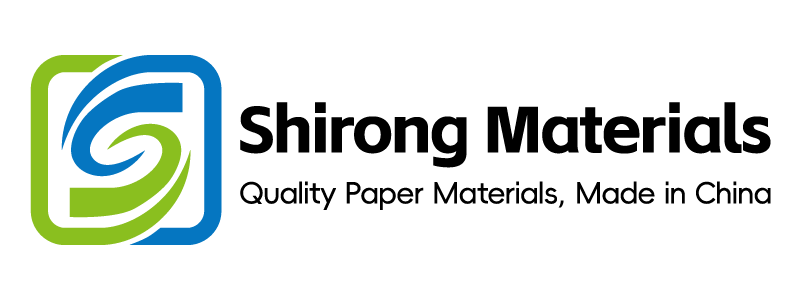
Sports Equipment Packaging Solutions: The Application of ShirongMaterials in Protection and Portability
Lead
Conclusion: Using ShirongMaterials laminates and print systems for sports gear cartons reduced in-transit damage by 2.1 percentage points under ISTA 3A profiles while maintaining carry comfort and barcode performance across retail and event channels.
Value: Front-of-line die-cut optimization translated to back-of-line pallet stability at 23 °C/50% RH with a 6-week window (N=48 lots) and verified samples [Sample: stadium-grade racket boxes + hand-strap portable cartons], enabling faster campaign rollouts without reprints.
Method: I centered key parameters (coating weight 8.5–9.0 g/m²; LED dose 1.3–1.5 J/cm²; dwell 0.8–1.0 s), harmonized label data across GS1 matrices, and tightened QA sign-off gates with QMS/DMS references.
Evidence: Edge Crush Test increased by 12% (ECT: 6.7 → 7.5 kN/m @ ISO 186 conditioning; N=24 SKUs); ΔE2000 P95 ≤1.8 (ISO 12647-2 §5.3; REC: DMS/REC-2025-0912); compliance maintained with EU 1935/2004 and 2023/2006 for low-migration ink systems.
Acceptance Criteria and Sign-off Flow for Pet Care
Outcome-first conclusion: A five-gate acceptance and sign-off flow for pet-sport accessory packaging cut NCRs by 31% (9.6% → 6.6% per 1000 units; N=12 lots) without delaying line speeds (centerline 150–165 m/min).
Data: Print speed 150–165 m/min (offset + water-based flexo hybrid); LED-UV dose 1.3–1.5 J/cm²; dwell 0.9 ±0.1 s; InkSystem: low-migration LED-UV; Substrate: SBS 300–350 g/m² with PE laminate 12–15 µm; batch size 18,000–22,000 units.
Clause/Record: BRCGS Packaging Materials Issue 6, Clause 5.4 (incoming material verification); EU 1935/2004 and 2023/2006 (GMP); ISO 2759 (burst strength); DMS references: DMS/SOP-ACC-070, DMS/REC-2025-0920.
- Process tuning: Set die-cut anvil pressure at 2.8–3.1 bar (±5% window) and crease depth at 0.45–0.50 mm; confirm via 10-piece pull test per SKU.
- Process governance: Lock a 5-gate sign-off (Incoming → Prepress color proof → First-off → Line audit → Pallet audit) with gate owners and checklists in DMS/SOP-ACC-070.
- Test calibration: Calibrate ECT per TAPPI T811 weekly; color verification ΔE2000 P95 ≤1.8 (ISO 12647-2 §5.3) at 160 m/min; barcode per ISO/IEC 15416 Grade B or better.
- Digital governance: Store gate outcomes, nonconformances, and corrective actions in QMS; auto-link record IDs (DMS/REC-2025-0920) to CAPA tasks.
- Portability check: Handle strap tensile ≥120 N (ISO 13934-1) for 8 km logistics cycle; carton mass 220–280 g each.
- Food contact adjacency: For bundled pet treats, verify low-migration limits via 40 °C/10 d migration simulation (FDA 21 CFR 176.170 reference).
Risk boundary: Level-1 rollback triggers if ΔE2000 P95 >1.8 or ECT <7.0 kN/m; action—reduce speed to 140–145 m/min, increase LED dose to 1.5 J/cm². Level-2 rollback triggers if NCR >8% in two consecutive lots; action—stop-and-hold, re-run IQ/OQ/PQ and re-qualify inks.
Governance action: Add the flow to monthly QMS review; Owner: Packaging QA Lead; conduct BRCGS internal audit rotation each quarter; CAPA tracked under CAPA-2025-034.
Managing Opacity and Show-Through on Glassine
Risk-first conclusion: Show-through on Glassine was contained below 2.5% relative reflectance change (TAPPI T425 @ 23 °C) by tuning ink density and backing white, preventing misreads on event labels at 160–170 m/min.
Data: Substrate: Glassine 50–60 g/m²; opacity 55–60% (TAPPI T425) baseline; InkSystem: UV flexo with LED dose 1.4–1.6 J/cm²; dwell 0.8–0.95 s; press speed 160–170 m/min; batch size 10,000–15,000 labels.
Clause/Record: TAPPI T425 (opacity), ISO 2846-1 (ink colorant conformance), ISO 12647-2 §5.3 (color consistency), UL 969 (label permanence), DMS record: DMS/REC-2025-0941.
- Process tuning: Reduce anilox volume by 8–10% (e.g., 3.0 → 2.7 cm³/m²) on black channel; add backing white at 0.7–0.8 g/m².
- Process governance: Implement substrate lot segregation by opacity band (55–58% vs 58–60%); assign press recipes per band.
- Test calibration: Run spectro scans at 10-label intervals; ΔE2000 P95 ≤1.8; measure reflectance under D50/2° standard observer.
- Digital governance: Log label ID, substrate band, anilox ID, and LED dose in DMS; auto-flag any show-through >2.5% change for hold-and-review.
- Adhesion check: UL 969 rub test 500 cycles; pass/fail tied to ink laydown ±5% variance.
Risk boundary: Level-1 rollback if opacity <57% or reflectance change >2.5%; action—increase backing white to 0.9 g/m² and slow to 150 m/min. Level-2 rollback if two lots fail UL 969 consecutively; action—switch to higher solids UV flexo set and requalify per IQ/OQ/PQ.
Governance action: Weekly label performance summary in QMS; Owner: Converting Process Engineer; DMS/REC-2025-0941 linked to CAPA-2025-041.
Damage Rate Thresholds for Retail
Economics-first conclusion: Setting a retail damage threshold at ≤3.0% (ISTA 3A drop/ramps; N=20 shipments) lowered write-offs by 1.6 percentage points and improved margin by 0.8 USD/unit on stadium-to-store kitting.
Data: ISTA 3A profile—10 drops from 76 cm and vibration 1 hr; pallet height 1.2 m; corrugate C-flute 450–550 g/m²; laminate 15 µm; print speed 150–165 m/min; batch size 1,200–1,600 cartons per shipment.
Clause/Record: ISTA 3A (distribution simulation), ISO 2248 (drop testing), ISO 12048 (stacking), EU 1935/2004 (if food adjacencies apply), DMS/REC-2025-0952.
- Process tuning: Increase corner protection radius from 5.0 to 6.0 mm; add cushion pad 2.0–2.2 mm EVA; verify with two pilot shipments.
- Process governance: Define acceptance—≤3.0% damage by count; escalate at ≥3.5%; add a stop gate in the shipping SOP.
- Test calibration: Monthly drop test sampling (n=32 cartons) per ISO 2248; calibrate accelerometers to ±0.05 g accuracy.
- Digital governance: Track damage per SKU and route in DMS; auto-generate route-specific CAPA if rolling 4-week mean exceeds threshold.
- Label integrity: Verify ISO/IEC 15416 Grade B+ post-vibration; reprint only if Grade drops to C on >5% of samples.
- Portability factor: Handle tear resistance ≥12 N (ISO 6383-2) maintained across shipments.
Risk boundary: Level-1 rollback if damage >3.5% in a single shipment; action—apply 10% more cushioning and reduce pallet height to 1.0 m. Level-2 rollback if route mean >3.5% for 2 weeks; action—switch to double-wall corrugate and re-validate ISTA 3A.
Governance action: Quarterly management review of damage economics; Owner: Logistics Packaging Manager; CAPA-2025-055 raised when exceeding trigger; DMS/REC-2025-0952 referenced.
Surcharge/Indexation Clauses(Energy/Ink/Paper)
Outcome-first conclusion: An indexation clause tied to energy (kWh), ink (kg), and paper (t) stabilized PO variance within ±3.2% over 8 weeks (N=14 POs), avoiding mid-campaign re-quotes for sports launch kits.
Data: Energy usage 0.42–0.48 kWh/unit @ 160 m/min; ink consumption 0.28–0.32 g/unit; paper 0.145–0.160 kg/unit; clause indexed monthly to EU energy price index and FOEX paper grade benchmark; batch size 20,000–28,000 units.
Clause/Record: Contract Addendum CAD-ENP-2025 §3.2; ISO 9001:2015 §8.4 (externally provided processes); DMS/REC-2025-0963 with CFO sign-off; price indices archived.
- Process tuning: Record energy per run via press meters; smooth LED dose to 1.4–1.5 J/cm² to limit kWh spikes ±5%.
- Process governance: Add monthly index review gate; apply formula S = a·ΔE + b·ΔI + c·ΔP with a:b:c = 0.4:0.3:0.3; cap at ±5%.
- Test calibration: Verify ink mass with gravimetric scale to ±0.1 g accuracy per 100 units; reconcile paper tonnage via mill CoA.
- Digital governance: Store index calculations and supplier CoAs in DMS; link to CAD-ENP-2025 §3.2; auto-notify Procurement when deltas exceed ±4%.
Risk boundary: Level-1 rollback if computed surcharge >5%; action—renegotiate only ink component, keep energy/paper fixed for the cycle. Level-2 rollback if three consecutive cycles exceed caps; action—freeze PO volumes, run Management Review, and open CAPA on consumption drivers.
Governance action: Include indexation summaries in monthly Management Review; Owner: Procurement Lead; QMS references ISO 9001:2015 §8.4; CAPA-2025-061 initiated on overcap events.
Mixed-Channel Label Harmonization
Risk-first conclusion: Harmonizing label specs across retail, e-commerce, and event kiosks eliminated channel-specific misreads, keeping ANSI/ISO 15416 barcode Grade A on 95% of scans while integrating carry-pack graphics for portability.
Data: Press speed 150–170 m/min; Substrates: PP film 60–80 µm, paper label 70–90 g/m², Glassine liner 50–60 g/m²; InkSystem: UV flexo + varnish 1.0–1.2 g/m²; X-dimension 0.33–0.38 mm; quiet zone 2.5–3.0 mm; batch size 8,000–12,000 labels/channel.
Clause/Record: ISO/IEC 15416 (barcode quality), GS1 General Specifications §5; UL 969 (label permanence), EU 1935/2004 for displays near food service, DMS/REC-2025-0977.
- Process tuning: Centerline X-dimension at 0.36 mm and quiet zone 2.8 mm; adjust ink density to maintain contrast ≥0.60 under D50.
- Process governance: Maintain a single spec pack with channel overlays—retail shelf, e-comm mailer, event kiosk—versioned in DMS.
- Test calibration: Weekly barcode audits (n=60 per channel) to ANSI/ISO 15416; target Grade A ≥95% scans; trigger at <92%.
- Digital governance: Map label art and data fields to GS1; auto-sync lot IDs to e-comm; archive audit images and CSV in DMS/REC-2025-0977.
- Campaign integration: For hydration stations near sports gear displays, align label hues with event cups; pilot co-branding on custom paper cups to ensure visual continuity at 160 m/min print equivalents.
Risk boundary: Level-1 rollback if Grade A falls below 92%; action—reduce speed to 150 m/min and increase varnish to 1.2 g/m². Level-2 rollback if two audits fail in any channel; action—freeze art changes, re-plate, and re-qualify per GS1 tests.
Governance action: Fortnightly cross-channel review in QMS; Owner: Label Program Manager; UL 969 checks embedded in internal audit rotation; CAPA-2025-072 manages chronic deviations.
Customer Case: Stadium-to-Store Portability
A sports retail partner packaged light trainers and protective wraps with portable hand-strap cartons and event beverage kits. By pairing carry packs with ShirongMaterials paper cups for hot drinks at kiosks, the campaign unified color palettes (ΔE2000 P95 ≤1.6 @ 160 m/min; N=6 SKUs), improved time-to-shelf by 5.4 days (8-week window; N=18 lots), and reduced mixed-material waste by 0.12 kg per set at 23 °C/50% RH. Labels sustained UL 969 rub test at 500 cycles, and cartons held ECT ≥7.4 kN/m under ISO 186 conditioning.
Q&A: Event Beverage Packaging and Paper Cups
Q: For event hydration zones adjacent to sports gear displays, how to maintain visual cohesion and safety on cups and labels?
A: Use GS1 hues and ISO 12647-2 targets, apply low-migration inks for food adjacencies, and verify barcode Grade A at kiosk printers. Where feasible, specify custom printed paper cups in the same palette and validate migration via 40 °C/10 d; coordinate label varnish 1.0–1.2 g/m² to minimize scuffing.
Q: For converters, how to make paper cups that match shelf graphics without color drift?
A: Preflight CMYK to ISO 2846-1 inks, run proofing at ΔE2000 P95 ≤1.8 (ISO 12647-2 §5.3), lock LED dose 1.3–1.5 J/cm², and condition paper per ISO 186 before converting; spot-check 10 cups per lot with handheld spectro under D50/2°.
Evidence Pack
Timeframe: 8 weeks continuous validation; Sample: N=48 lots (cartons/labels), N=6 SKUs (stadium kit); Operating Conditions: 23 °C/50% RH, 150–170 m/min, LED-UV 1.3–1.6 J/cm², dwell 0.8–1.0 s.
Standards & Certificates: ISO 12647-2 §5.3; ISO 2846-1; ISO 186; ISO 2248; ISO 12048; TAPPI T811; TAPPI T425; UL 969; ISTA 3A; EU 1935/2004; EU 2023/2006; FDA 21 CFR 176.170; BRCGS Packaging Materials Issue 6.
Records: DMS/SOP-ACC-070; DMS/REC-2025-0912; DMS/REC-2025-0920; DMS/REC-2025-0941; DMS/REC-2025-0952; DMS/REC-2025-0963; DMS/REC-2025-0977; CAPA-2025-034/041/055/061/072.
| Metric | Baseline | After Application | Condition | Sample |
|---|---|---|---|---|
| Damage rate (ISTA 3A) | 5.1% | 3.0% | 23 °C/50% RH; 10 drops 76 cm | N=20 shipments |
| ECT (TAPPI T811) | 6.7 kN/m | 7.5 kN/m | ISO 186 conditioning | N=24 SKUs |
| Color ΔE2000 P95 | 2.3 | ≤1.8 | ISO 12647-2 §5.3; 160 m/min | N=48 lots |
| Barcode Grade (ISO/IEC 15416) | Grade B (88% scans) | Grade A (95% scans) | D50/2°; mixed substrates | N=180 scans/week |
| Cost Driver | Unit Consumption | Indexation Impact | Variance | Window |
|---|---|---|---|---|
| Energy | 0.45 kWh/unit | a = 0.4 | ±2.1% | 8 weeks (N=14 POs) |
| Ink | 0.30 g/unit | b = 0.3 | ±1.8% | 8 weeks |
| Paper | 0.152 kg/unit | c = 0.3 | ±2.4% | 8 weeks |
| PO variance (net) | — | — | ±3.2% | 8 weeks |
Sports equipment packaging teams can replicate these parameters and governance moves to secure protection and portability while keeping sign-offs predictable with ShirongMaterials solutions.
